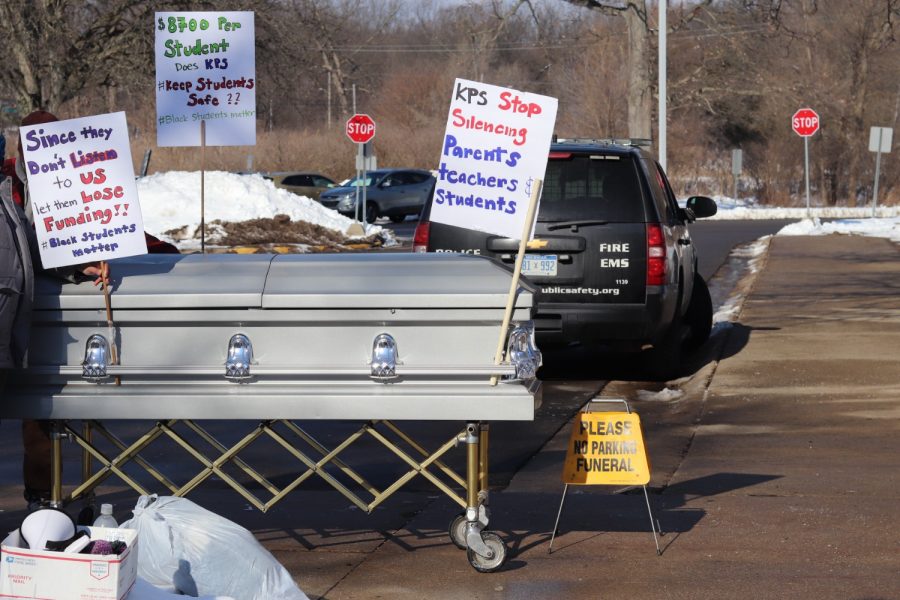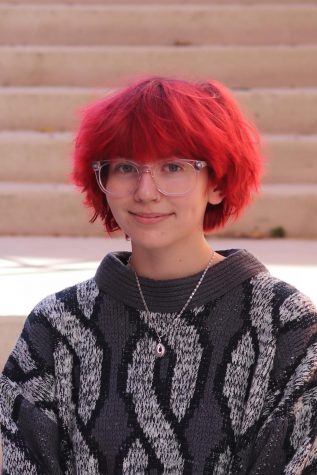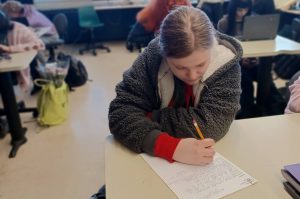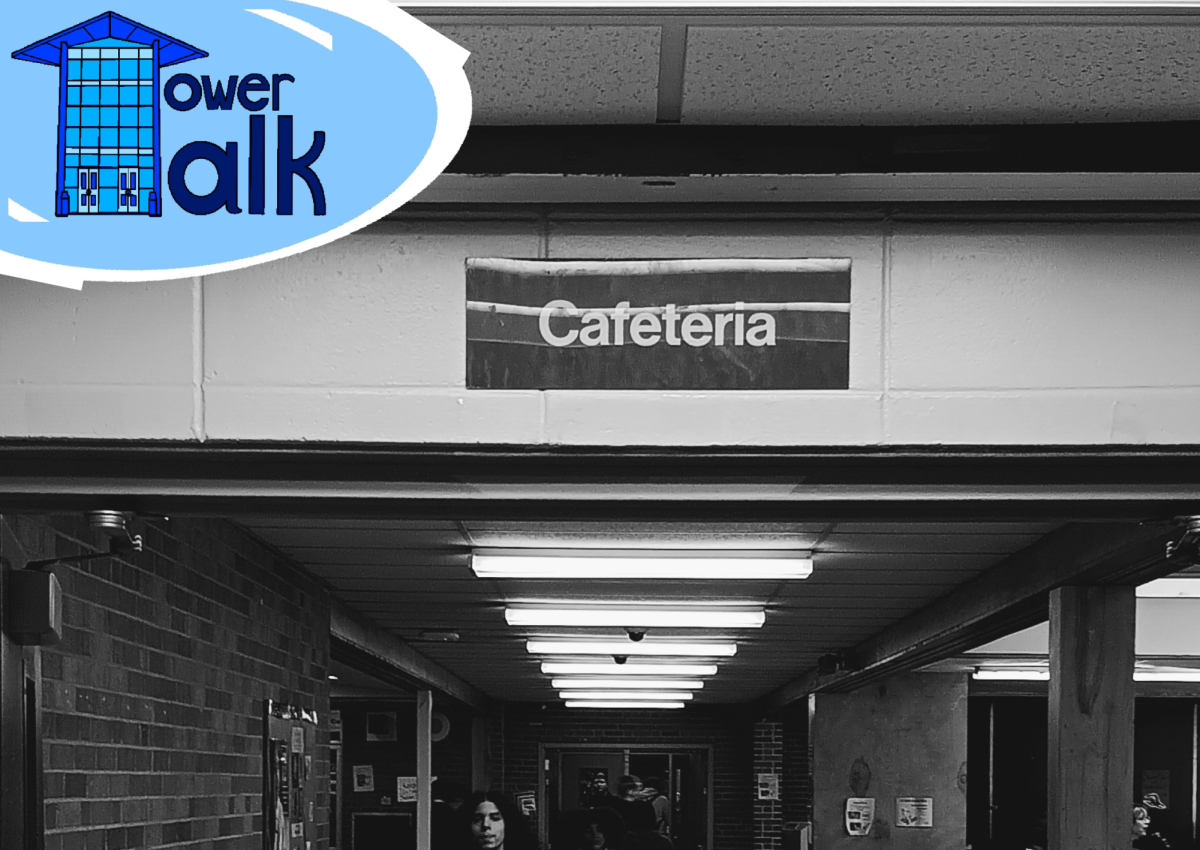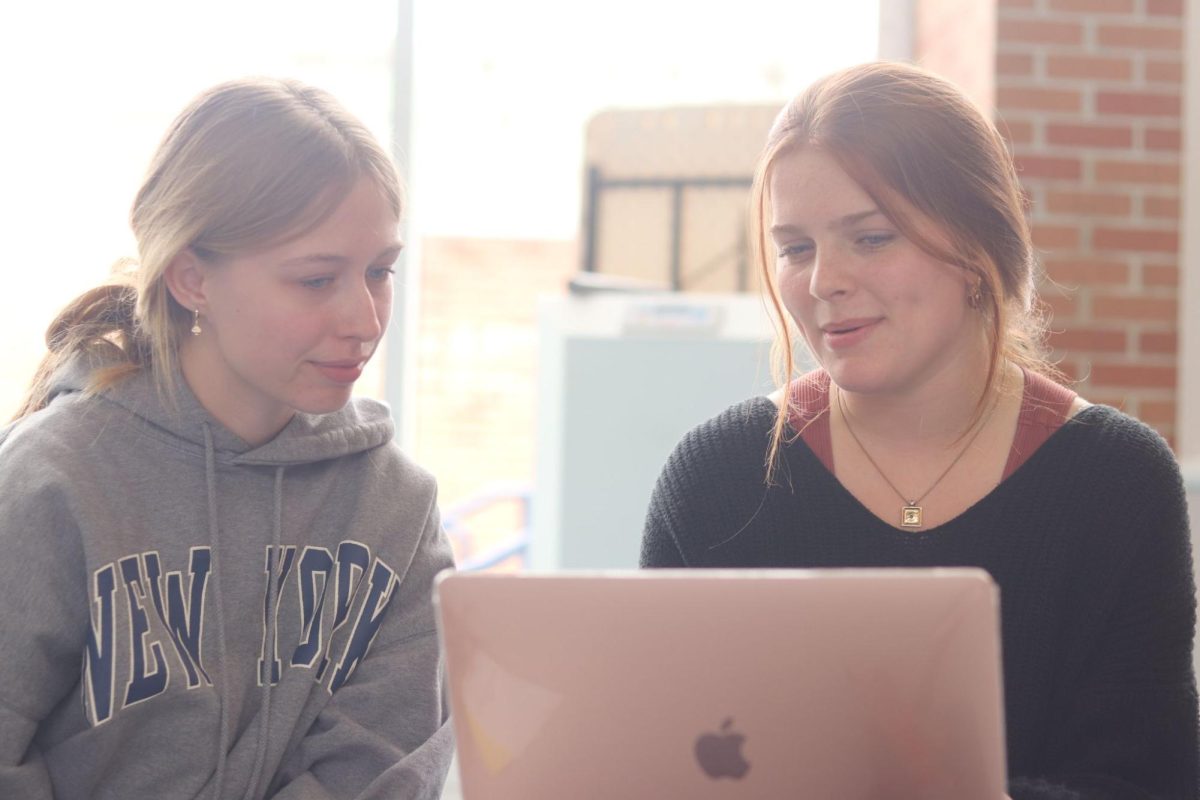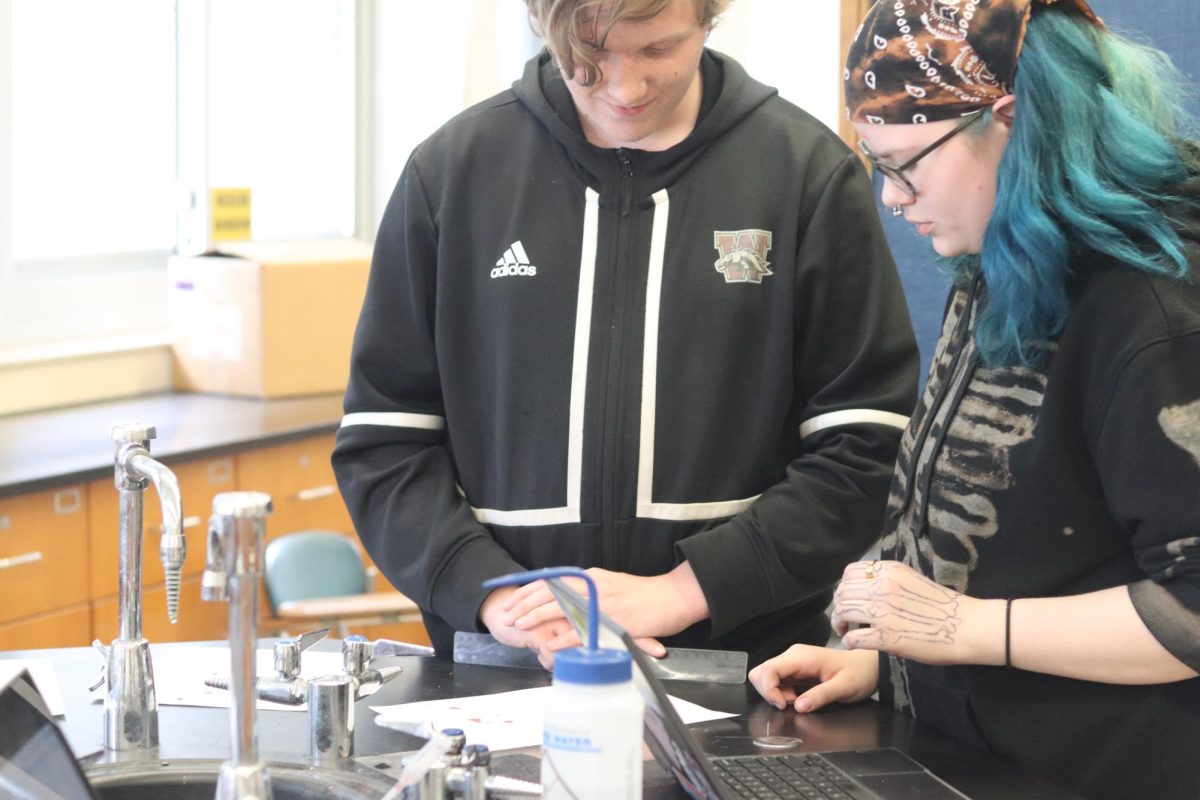Activists encourage students to skip school on count day in protest of KPS
Credit: Milo Turner
Protesters prop signs up against a large, silver casket. Shortly after, the demonstrators were asked to remove the display.
February 25, 2022
On February 10, a protest against KPS administration was led by a group of local activists outside of Loy Norrix High School. The demonstration started at around 10 a.m. in front of the building.
One demonstrator, who asked to be referred to as K, explained the inspiration behind the gathering.
K said, “We’re just out here trying to make students and parents aware about count day, which is today. You know, kids get counted, but there’s a lot of issues going on in the schools that don’t get addressed, so we want them to also count those voices. We want to encourage the students as well to take a stand.”
K continued, elaborating on the student involvement with the protest.
“We understand that there’s a lot of intimidation and a lot of hesitation from students to do this, so parents decided to stand up and kind of lead a protest to encourage the students to speak up. We [the protest organizers] were encouraging students to actually skip on count day. That was more on social media. A flier was going around. But yeah, if students want to come out here and, like, join for a little bit we would encourage that as well,” K said.
Count day is a district-wide assessment of the funding and resources needed for KPS schools, based on student attendance. Teachers are responsible for taking attendance to account for every student present in the building, and KPS is allocated around $8,700 per student from the state of Michigan.
Participants explained that the primary issues which sparked frustration in the community involved student safety, more specifically the safety of students of color and the district’s COVID-19 protocols.
Protestor and KPS parent Aleena Evans said, “There are students that feel that the black students at the school are not being treated equally. There’s concerns with student safety, as far as the fights going on and also with COVID protocols not being followed correctly.”
On whether or not her views are representative of the Loy Norrix student body, Evans said, “Yes, the students that I’ve talked to, yes.”
Protestors waved picket signs with phrases like, “Since they don’t listen to us, let them lose funding” and “$8,700 per student” written in marker.
Halfway through the demonstration, a new component was introduced: a silver casket.
The casket, accompanied by two double-sided signs that read “please, no parking” and, “funeral,” was identified as a reference to the recent deaths of two KPS students.
A community organizer, who requested to remain anonymous for the sake of preserving personal safety, explained the protest’s use of the coffin, saying, “We’ve had at least two deaths of black students, so what we really are trying to demonstrate, I mean, this also applies to those of us that maybe need that quick reality check,” the community organizer continued. “We’re not through the pandemic. COVID is really harming a lot of people and that always falls on hardworking families, low-income people, black and brown people, and so this is also representative of what we’ve lost during this pandemic, but even closer to home, that we’re losing children and we believe that there are more ways that could be preventable.”
The community organizer continued, “What we are hearing from staff and parents and from students themselves is that we’re hearing a lot of concerns about the lack of cleanliness standards in KPS versus maybe other schools that are private or that have more funding going to them.”
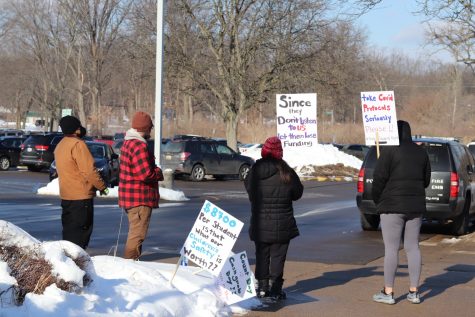
The community organizer and other protestors present expressed frustration over their collective efforts to get in contact with the local and state government.
¨We have actually had people who have had meetings with the state representatives who keep pointing us back to the school board, and so we have exhausted all of the avenues that we can, and we don’t have any other way, really, than by increasing communication among the community itself and then encouraging the community to speak up and take action,” the community organizer said.
The organizer explained their broader stance on the issue, saying, “For count day, it’s very dependent on them having students come to school so that they can receive specific funding for the schools. However, because of what we are hearing, especially in the black community, how our citizens are being treated or how their voices are being suppressed, we don’t believe that that funding is worth the harm being caused to our students, so we want them to have a space to speak up.”
LN principal Christopher Aguinaga confirmed that none of the protestors involved had attempted to reach out to him and voice their concerns, but he had caught wind of the encouragement to skip count day before the adults and parents showed up on campus.
“I had heard rumors from certain students and teachers, and then the morning of [the protest], I received the fliers that were being distributed. I’m not sure where on social media, but a parent saw them and emailed them to me,” Aguinaga said.
“One lone protester came at 10, a second protester came at maybe 10:15, and then two protesters came with the casket at maybe 10:45. I ended up asking them to remove the casket at around noon, and then they left,” Aguinaga explained.
Aguinaga expressed concern over the reactions from students in the building to whom the casket was visible.
Aguinaga explained, “When it became evident that the casket was triggering some trauma among students because death is very traumatic, and the memory of it, particularly after we’ve just had a medical emergency, that’s the point at which I went outside and introduced myself. Ms. Anderson [LN Dean of Students] and I went outside and introduced ourselves. We didn’t take the SRO [student resource officer] or anything, and just tried to reason with the adults out there
Again, I knew none of them. I just said, ‘look, I get it, I understand your First Amendment right to protest, I’m not asking you to leave, I’m not asking you to remove your signs, but the casket’s triggering to students, so for their own mental well-being can we please take this away.’ They were reasonable, and they took the casket away and a few minutes later they were gone.”
Going forward, Aguinaga is now working with KPS staff to create a concise policy for how schools should handle similar demonstrations in the future.
“The day of, I was in contact with Dr. Raichoudhuri, and my thing to her was that we have to get a policy in place for how outside protestors protest on school property. This is public property, so people have a right to be here, but people don’t have a right to disrupt the learning environment or to make students feel uncomfortable and I heard from several students that they did feel uncomfortable.” Aguinaga continued, “I heard from the student advisory council that students were waiting in groups at the bottom of the tower because they didn’t want to walk by that [the protest] alone. The superintendent agreed with me and we’re going to be working on the next steps on how we can both uphold people’s right to protest but also make sure students are learning in a non-disruptive environment.”


